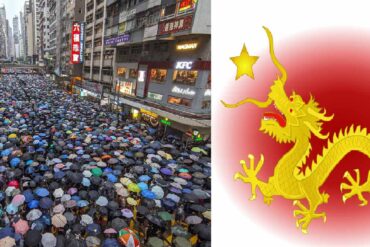James Wilson, a civil engineer, is a member of the Mullaperiyar Special Cell for the Government of Kerala. His profession demands him to decipher figures and statistics of various happenings in a manner that is easily understood by anyone reading a report he has prepared. This could probably be the reason why Mr. Wilson started researching and digging deep into the current major issue in our country – the demonetisation of currency notes of Rs. 500 and Rs. 1,000. According to him, he did not find any article or news report convincing enough that would provide him complete and transparent details about demonetisation and its impacts on society. And so he decided to find it out for himself.
He is now posting his findings on his blog ‘Decipher the Demonetisation’ and conveying his thoughts through his Twitter handle @jamewils, which is in turn becoming popular.

In a conversation with The Kochi Post, Mr. Wilson shared his views on Prime Minister Narendra Modi’s decision of demonetisation, its impact, and its pros and cons.
When asked to explain his opinion regarding the Prime Minister’s decision of demonetisation and if it was implemented at the appropriate time, Mr. Wilson said, “A decision cannot be underlined as a good one or bad one unless its success rate and the way it has affected the economy and people are considered. Mr. Modi’s decision to cease the legal tender of the denominations of 500 and 1,000 has not actually brought the people who posses black money or unaccounted money to the spotlight. Rather, it has only been able to bring out illegal money from people who did not even know it was with them. They have demonetised 500 and 1,000 notes in circulation, which has made 86.4% of value of total the currency in circulation redundant, which in turn has choked and paralysed the entire cash-based economy. The decision would have been sensible and served its purpose had it been implemented after thorough research about the condition of the economy, rather than in an impulsive manner.”
Mr. Wilson, through his blog, gives a clear demonstration about why demonetisation has proved to be a setback for the working class and did not make much of a difference to the higher strata of society. According to statistics, the total currency in circulation was Rs. 16.415 lakh crore as on 31 March, 2016. Out of this, the value of Rs. 500 notes alone is 47.8% and that of Rs. 1,000 notes is 38.5%. This, together accounts for 86.4 per cent of the total currency in circulation.
Demonetising these denominations would require the government to print currencies of other denominations, especially of 100, which only constitute 9.6 percent of the total currency circulating in the economy, in order to fill the void created by the lack of higher denominations and to support the economy for the time being. Instead, the government introduced the new denomination of Rs. 2,000.
Criticising the inefficiency of the government in foreseeing the circumstances and acting accordingly, Mr. Wilson says, “I don’t think our policymakers are incapable to an extent where they cannot even think of the basic problem that people will find it extremely difficult to get change for Rs. 2,000 as the number of currencies of lower denominations are less and, therefore, no one would like to give away what little they have with them. However, this is exactly what has happened, which ultimately led to long queues in front of the ATMs and banks. Moreover, the ATM withdrawal limit was also initially fixed to Rs. 2,000, which meant that a person would get only one currency of Rs. 2,000 even from the ATM. This undoubtedly adversely affected the middle-class working families who rely on salary and have to plan a month in advance and put aside a fixed amount for daily expenses. The increasing need of the Rs. 100 note has definitely provided people printing fake currencies with a big advantage.”
He added that the suitable solution the government mooted for all these problem was going cashless, which has in no manner worked mainly because the technical scenario that propagates a cashless economy is not up to the mark and the systems in our country are not of a standard that can withstand this high amount of traffic and will definitely lead to network congestion.
However, Mr. Wilson points out that going cashless could be considered as one of the advantages of demonetisation that will in turn make the transactions transparent. But he still asks the government what rural India would do in such a situation. In places where people don’t have electricity and water, how is the government expecting them to use debit cards?
Mr. Wilson suggests some simple matters that could have been considered to implement demonetisation in an effective manner. He says that the government should have gradually decreased the number of 1000 and 500 denominations in circulation and printed more of Rs. 100 notes and announced demonetisation at a time when these higher denominations, even if flushed out of the economy wouldn’t have made much impact. He says that changing the colour and layout of the currency at frequent intervals will be useful to stop counterfeit notes in the economy to a great extent.
“The government also should have planned to start making the economy cashless at least in urban areas so it could them completely concentrate on rural India. And if it was particular about curbing black money in the economy, high-end transactions like that of property etc., should have been mandatorily made through the account only,” he added.
According to the engineer, it will take another six months for the economy to revive from the cash crunch.
Main photograph by Sudipto Sarkar via Flickr.







